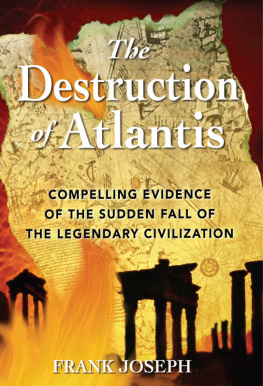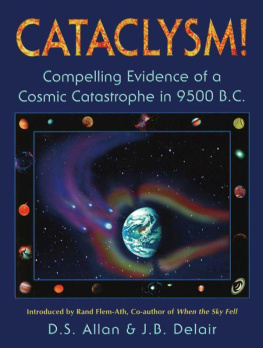
Aftershock:
The Ancient Cataclysm That Erased Human History
Authored by Brien Foerster
Cover by Hans Messerschmidt
All photos in the book by Brien Foerster or Irene Mendoza

Machu Pic'chu: Inca repair work on top of older megalithic walls
Dedication
A book like this is not the labor of one person, but is the compilation of all of those that came before him. The Inca were one of the greatest cultures of all time, in part due to their social cohesion and mastery of astonishing agricultural systems that stretched from valley floors to the tops of mountains. Although the colonial Spanish tried brutally to extinguish any vestiges of their culture and works, and wrote incorrect histories about them, we know through oral traditions that they did not claim responsibility for the great megalithic works attributed to them by most writers.
The dynastic Egyptians, makers of astonishing temples and other structures of stone, also recorded through their glyph system that their ancestry went much farther back in time than most academics will accept. It is the hope that this book will shed light into a much more complex and intriguing history of our planet than what we have been taught.
To this end, as regards ancient Peru, I wish to thank Dr. Theo Paredes, Willco Apaza, Sr. Juan Navarro, and Sr. Renato Davila Riquelme for their assistance in guiding me through the complex history of that enchanting country. In Bolivia, Antonio Portugal has been a vital teacher, and in Egypt, no one could possibly have had better resources and insights than those graciously and freely given by Stephen Mehler, Mohamed Ibrahim, and the amazing Yousef and Patricia Awyan, as well as the rest of the Awyan family of Giza.
In addition, to my beloved Irene, who has walked with me every step of the way.
Forward by Stephen S. Mehler
In the last decades of the 20th, and the first two decades of the 21st centuries, many researchers have arisen to seriously question accepted academic theories concerning the ancient history and prehistory of humanity, and call for new paradigm shifts about human origins and distinct existence of ancient advanced civilizations.
Brien Foerster has emerged as one of the most active and profound of these researchers. He not only questions academic theories, but actively and vigorously goes to ancient megalithic sites around the world to investigate for himself. Brien has visited these sites in the presence of world-class archaeologists, geologists, engineers of all types, chemists, physicists, and stone masons.
I have had the privilege to be with Brien onsite four times in Egypt, and to Peru, Bolivia and Lebanon, and watch and experience him deeply investigate these areas.
Brien has produced many books and this current one is an excellent work, with his own concise analysis of the literature and onsite observations. It is full of visual evidence of artifacts and sites not seen by most scientists and laypeople. The evidence is in strong support of the theory that a worldwide cataclysm - mentioned in great flood myths of over 250 different cultures - impacted the Earth and humanity ca. 11,500 years ago. This book is a must read for professionals and laypeople alike - well written and presented with ample physical evidence that can no longer be denied or ignored by anyone seriously interested in the true prehistory of humanity.
Stephen S. Mehler, MA
Lafayette, Colorado
May 2016
Contents
1. The Case For Ancient Cataclysm pg.8
2. Peru And Bolivia pg.64
3. Egypt pg.117
4. Lebanon pg.292
5. Closing Thoughts pg.309
6. Bibliography pg.311
1. The Case for Ancient Cataclysm
Most readers have likely heard the story about the great flood from their childhoods, as portrayed in the Bible. The Genesis chapter describes how a vengeful God punishes humankind by literally flooding the surface of the Earth with water, extinguishing most terrestrial life over 40 days and nights of torrential rain. Those who survive are a small, divinely chosen group led by a righteous man named Noah, who not only leads his family but one male and one female of each land-based species onto a ship he built to survive

One version of how Noah's Ark may have looked
the cataclysmic ordeal.
Many believe so strongly in the ancient texts that comprise the Bible, that they accept the great flood as truth. Readers that are more pragmatic may ask, When did this flood occur? And, How is such a meteorological event possible? Biblical sources are not forthcoming with answers.
The Flood myth is not solely the domain of one specific religious text or belief system, however, and is often a symbolic narrative in which a great flood is sent by a deity, or deities, to destroy civilization in an act of divine retribution. Parallels are often drawn between the flood waters of these myths and the primeval waters found in certain creation myths, as the flood waters are described as a measure for the cleansing of humanity, in preparation for rebirth. Most flood myths also contain a culture hero, who strives to ensure this rebirth. (1)
The flood myth motif is widespread among many cultures, as seen in Mesopotamian flood stories, the Puranas (ancient Hindu texts), in the Greek Deucalion mythology, the lore of the K'iche' and Maya peoples of Central America, as well as the Muisca people of present day Colombia in South America. In fact, there are oral tradition stories pertaining to this concept from antiquity, from cultures of Sumeria, Babylonia, Germany, Ireland, Finland, the Maasai of Africa, Egypt, India, Turkestan, China, Korea, Malaysia, Lao, Australia, Polynesia, and Native people of North America, Mesoamerica and South America to name just a handful.
Catastrophism is the theory that the Earth was affected in the past by sudden, short-lived, violent events, possibly worldwide in scope. (2) The dominant paradigm of modern geology is called uniformitarianism (sometimes described as gradualism), in which slow incremental changes, such as erosion, create the Earth's appearance. This view holds that the present is the key to the past, and that all things continue as they were, from the beginning of the world. Recently a more inclusive and integrated view of geologic events has developed, changing the scientific consensus to accept some catastrophic events in the geologic past.

Mayan text known as the Dresden Codex
This holds that there have been violent and sudden natural catastrophes such as great floods and the rapid formation of major mountain chains, such as the Himalayas and the Andes of South America. Plants and animals living in those parts of the world where such events occurred were often killed off, according to the 19 th century French scientist Georges Cuvier. Then, new life forms moved in from other areas. As a result, the fossil record for a region shows abrupt changes in species.
Cuvier's explanation relied solely on scientific evidence rather than biblical interpretation. His motivation was to explain the patterns of extinction and faunal succession that he and others were observing in the fossil record. While he did speculate that the catastrophe responsible for the most recent extinctions in Eurasia might have been the result of the inundation of low lying areas by the sea, from the melting of ice at the end of the last ice age, he did not make any reference to Noah's flood. (3) Nor did he ever make any reference to divine creation as the mechanism by which repopulation occurred following an extinction event. In fact, Cuvier, influenced by the ideas of the European Enlightenment and the intellectual climate of the French revolution, avoided religious or metaphysical speculation in his scientific writings. (4)
Next page









